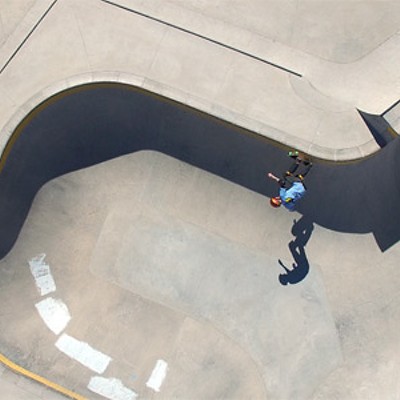Once, maybe twice a year you see it on the news. Seabirds on the Atlantic coast, dead and dying, covered with an oily mess, the result of foreign cargo and other ships deliberately dumping bilge oils—the slimy crap that accumulates in the bottom of the ship while at sea—into the ocean.
They do so off the Canadian coast for a couple reasons. One is that having completed their trans-Atlantic journey from Europe, ship captains are eager to lighten their load and save time and money over the last leg of their trip.
The other is that those same ship captains know they stand less chance of being caught—and subsequently fined up to $250,000—off the less-monitored coast of Atlantic Canada than along the eastern US seaboard.
The World Wildlife Fund estimates 300,000 Atlantic seabirds die each year as a result of bilge dumping (the Canadian government says up to 100,000). It’s those thousands you don’t see on the news that Zac Crouse and Kip Keen will be looking for this summer.
Crouse and Keen launch their sea kayaks next week and set off on a circumnavigation of Newfoundland in an attempt to document the result of bilge dumping on Atlantic seabirds. Calling their expedition Atlantic Coast Watch 2006, they’re hoping to depart from Port Aux Basques on May 10, and expect to complete the trip by early September.
“Being on the water is a big part of both of our lives, and in doing that we started to become aware of the problem of ship-source oil pollution,” says Keen, a Halifax native and anthropology graduate student at Memorial University. “It’s by no means the only problem, but it’s something that NGOs and the federal government have said needs to be addressed. So in addition to doing the trip, we thought we could use it as a platform to raise awareness with the public.”
In mid-April, residents on Newfoundland’s south coast discovered hundreds of dead birds washed ashore, which the Coast Guard deemed the result of bilge dumping by a single vessel. But with the vessel having an estimated seven-day head start, the Coast Guard also admitted chances of catching the perpetrators were nil.
“Transport Canada has said one solution is to increase our air monitoring,” says Keen. “I think in Newfoundland they only have 300 to 400 flight hours a year. It’s like the Wild West out there, and you can’t prosecute if you don’t have evidence. Transport Canada believes it’s one of the most important things, but it costs money.”
While bilge dumping is a crime of opportunity and occurs more often off the less-inhabited coast of Newfoundland, Crouse does an extensive amount of guiding in places like Terence Bay, and says evidence of the effect of bilge dumping on Nova Scotia is clear.
“If you go along any shoreline of Nova Scotia, you will see the remnants of oil that has washed ashore,” says Crouse, who is originally from St. Margaret’s Bay. “Especially on the east coast of Cape Breton, because that’s where the most shipping takes place. It is definitely an Atlantic Canada problem.”
Keen hopes that as people recognize the problem, they will lobby the provincial and federal governments to put more financial resources into keeping watch on the coast.
“The Coast Guard and Transport Canada do an excellent job with what they have, and there are people there and at Environment Canada who want to take on this challenge, but it always comes down to resources.”
Crouse and Keen plan to use whatever photos and other documentation they accumulate for public presentations when they finish the trip next fall.
“We’d like to do presentations in Halifax and St. John’s,” says Crouse. “We think there are a lot of people who’d want to hear about the trip, so we’ll mix photos and anecdotes with information on the pollution problem, what the government is doing and what the public can do.”
Keen refers to another well-known icon of Atlantic Canadian life to illustrate the point they hope to make.
“Saving birds isn’t really the only issue here, although it’s awful that that is happening,” he says. “But it’s also an indication of a bigger problem of how we treat the ocean. In that sense, these birds are like the canaries in a coal mine.”












